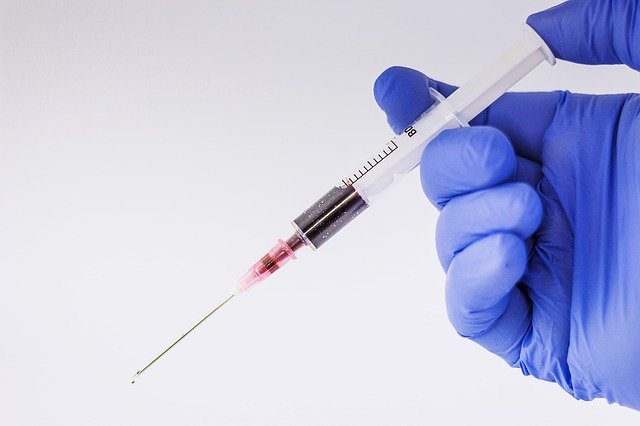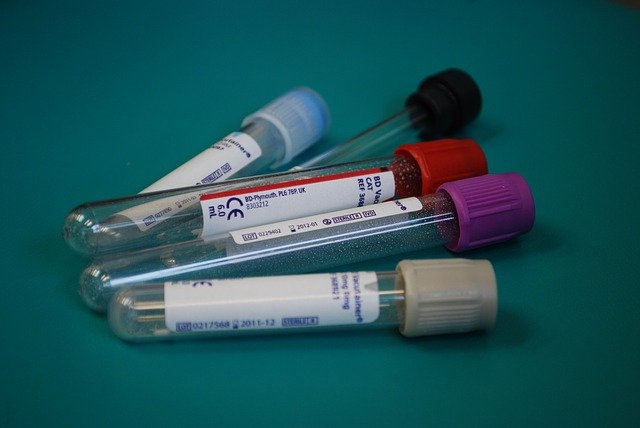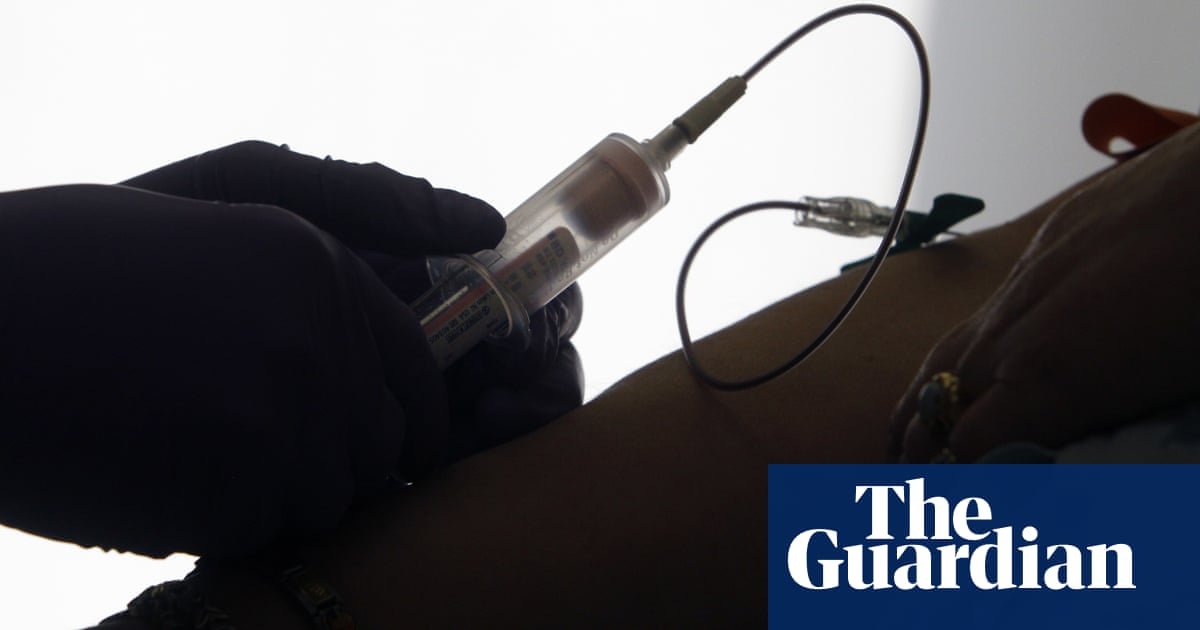As our population grows and grows older. So the number of cancer sufferers will increase.
A screening cancer blood test to detect cancer individuals that are still feel healthy. They have no symptoms that will be easier to treat and cheaper to treat and save their lives. And there’s a lot of work still to be done, to really workout, whether it can improve the cure rates of cancer, but it’s a really promising first step. Blood tests though are cheap and easy, and this new research is a step towards using them to transform cancer treatment.

How Valuable is a Simple Cancer Blood Test?
A blood that could detect cancer earlier than current methods has long been a dream for oncologists. Taking a blood sample allows you potentially to look across multiple cancer types and identify an individual with early cancer in their body, Irrespective of the cancer type. The hope is that these so-called liquid biopsies could save countless lives by helping doctors to diagnose cancer before symptoms appear, plus they’re less invasive and faster than most of what’s available now. If you were to do something like take a biopsy out of a kidney, you are doing a much more risky procedure, you’ve got a risk of bleeding and actually a tiny risk of actually dying from it. Whereas having a blood test done, it’s usually very safe and can be done very quickly.
Components of the average blood sample:
I wanted to start by getting to grips with what is in our blood beyond what we might have learned at school, the plasma, the red and white blood cells and so on. Well, we’ve got all of the proteins that make up the internal blood structure or hormones or circulating to affect the function of all the organs. We’ve got the clotting factors, which will make you clot when your blood vessel wall is breached. And then we’ve the physiological Blood thinners, the anticoagulants to balance those clotting factors so that you don’t have excessive clotting. And of course, you’ve got the DNA and the white cells. So you’ve got accessible DNA to do genetic studies.
Can we really develop a Cancer Blood Test?
So it sounds like blood is a lot more complex than some of us might originally have thought, it’s used as a diagnostic tool, which is what’s interesting. How aligned are we on blood for diagnosing different diseases?
I think we’re hugely reliant. It is the number one thing we use for diagnosis. And if you think about having blood taken, it may be a little bit uncomfortable, but it’s very low risk. Whereas if you were to do something like take a biopsy out of a kidney, you are doing a much more risky procedure. You’ve got a risk of bleeding and actually, a tiny risk of actually dying from it. Whereas having a blood test done is usually very safe and can be done very quickly. So it’s the number one way of diagnosing diseases in this age? I can’t see it changing in the future.
How Cancer blood Test works? and is it related to the oridinary blood tests?
A lot of us have had blood tests for various things over the years, you have your blood sample taken into one of those little tubes off, it goes to the lab. What is it exactly they’re looking at? what would happen when that blood sample gets to the laboratory?
So as you know, when you have a blood test done we use a sharp, small needle attached to a syringe or the tube and pop it into a vein and take the sample. And then the sample will be collected into a specific tube. So we’ve got lots of different types of tubes. Some have anticoagulant in, or some have nothing in so that you actually clocked the blood and then the sample will be taken to the laboratory. And depending on what tests you’re going to do, and remember there’s hundreds, thousands of different tests, the sample will be put through a machine.
Now what physicians are looking for with that machine is a biomarker. It could be a gene, a protein, or even the numbers of common components like red blood cells to give a clue as to what the problem might be.
When we do a blood count. We actually count the number of cells within the blood. So we’re looking at the red cells, the white cells and the platelets. And we often do a blood count on people. It’s a routine test, probably the commonest nutritional problem in the world is iron deficiency, children, often iron deficient women in their fertile years, often iron deficient. So we often do a full blood count looking for iron deficiency. And what would expect to see is we’d have a low hemoglobin and that the red cells would be small and pale because they’re short of iron.
Is there anything you can’t diagnose using blood?
I mean, we hear a lot about, you know, potential tests for cancer or even certain signs of dementia have been picked up in blood. And there’s some things where it’s not enough.
So I think you can pick up almost all genetic disorders that are inherited. If you have a local cancer say skin cancer, clearly you can’t look at the genome of that cancer. You’d have to actually take a biopsy. So yes, there, there are some limitations.
Cancerous tumors are often biopsied because it’s one of the main ways in which a definitive diagnosis can be made. Usually it involves a trip to the hospital and a local anesthetic, but what if we could detect cancer with a simple blood test and what if we could use it as a screening tool to catch cancer in its early stages? So, and then equally the Holy grail really is to push a stage shift of detection of more cancers at an earlier stage where actually we have very good treatments.
Some exciting and emerging field of liquid biopsies
We’ve got into the background on blood and its important role in diagnosing many diseases. Cancer, however has been a tough nut to crack. Nonetheless, this area of research is booming and research has believe it holds the promise to detect cancer early before symptoms show potentially saving many, many lives.
But how do these liquid biopsies work?
Let me tell you a bit about how we detect cancer today. So if you go to your doctor and they suspect that there might be cancer involved, what happens? How, how did they go about confirming?
Okay, so cancers are very broad across different types and stages. So detection of cancer will vary depending on clinical presentation, but basically there will be a number of different tests that are carried out to confirm diagnosis. And currently diagnosis is based on having some form of surgery or biopsy to remove tissue from the suspected cancer. And that’s then confirmed by a pathologist through looking or using markers to analyze that tissue.
One of the things that has been happening in the recent years has been a real push to develop a blood test, to detect cancer.
These so-called liquid biopsies. Can you imagine how that would be such a useful tool to have? or even having a universal cancer blood test?
So the potential of this liquid biopsy is sort of coming to the fore now, as various clinical studies and trials report, but basically the excitement is around the idea that you can take a blood sample from the majority of individuals and that’s well tolerated, and that can be repeated so that we could do a test and repeat that test two, three months down the line and see how the tests compare. Taking a blood sample allows you potentially to look across multiple cancer types and identify an individual with early cancer in their body, irrespective of the cancer type.
What is it that scientists are actually looking for in the blood to give signs telltale signs, that there might be a cancer present? What are the kinds of molecules we’re talking about?
So the liquid biopsies really looking for a signature or evidence that the patient has cancer at that point in time. And we’re predominantly looking at DNA or circulating tumor DNA and that’s DNA that’s been basically shared by dying cancer cells or has been actively released from cancer cells into the blood. We’re also looking at cancer cells themselves, and these are called circulating tumor cells. And then there are other molecules which are in the blood, which again can be hallmarks of cancer. And these include RNA and proteins,
Many cancers, tumors, shed material into the blood, like all cells do. One of these substances is DNA. And that’s important because the DNA in cancer cells is slightly different from the DNA in our healthy cells.
A tumor will only survive because it’s provided with a source of oxygen through blood vessels. And therefore the cancer cells themselves are in intimate contact with the blood supply. As those cancer cells die, then their cargo, their contents can be released into the bloodstream, but also sometimes as active secretion. So the cancer cells are checking out their cargo as they grow and change.
This is because cancer is a disease of the genome is caused by changes in our genes, make healthy cells mutate into cancerous ones. This research is really promising, but challenges do lie ahead. First cancerous tumors, excrete minuscule amounts of material into the blood. And as we’ve heard, there’s lots of other stuff in blood too. It’s only recently that scientific instruments have been sensitive enough to pick up on these smaller amounts. And sometimes it can still fly under the radar. And there are other complexities too, for instance, pregnant women have DNA from their baby floating around in the blood. Meaning there’s even more to pick through to try to find DNA released by cancer cells. To avoid false alarms, doctors have to be able to routinely and reliably pick up on circulating DNA from cancer cells. Finally, it will be very difficult to have a test that detects all types of cancer that’s because different cancers have different genetic fingerprints. You either go for a broad brush approach or you try to focus on specific kinds, difficult to combine both in one test.

So these tests are really trying to achieve two things. So that’s the ability to pick up more than one cancer type, but then having a sensitive test so that you can pick up the cancer in early stage disease. And actually by doing that, the focus will inevitably have come from one particular cancer type and the profile of genetic changes, which might be common in that cancer. So the alterations which has seen in a colorectal cancer for example, may be less applicable to another cancer such as an endometrial cancer. So therefore the test will have limited or less value in a different cancer types.
You have to target your test to the kind of cancer that you’re trying to look for?
Yes, exactly. So they’re looking for common changes, which characterize different common cancers, but inevitably that means that some cancers will fall through the loop because they don’t have those changes present.
This means that some cancers will be missed if this tool was used solely in a routine screening. So it would need to be used in conjunction with other tests to pick up all kinds of cancer
So in terms of monitoring treatment success, earlier intervention and changing of treatment, if a treatment is not successful rather than waiting for evidence by imaging, which may be several months later, and then equally the Holy grail really is to push a stage shift. So detection of more cancers at an earlier stage where actually we have very good treatments already. So a small, early stage cancer can predominantly be cured by surgery and adjuvant therapy.
So you might be able to reduce the amount of chemotherapy in these very aggressive therapies that people haven’t been Experience.
The analogy is a good analogy, is diabetes. So diabetes is well managed by regular blood monitoring tasks. So can we move to the point where cancer can be managed equally by regular blood monitoring tools?
So there are obstacles in the way, but if we can harness this concept and make a reliable blood test, the consequences could be huge. Even in developed countries, nearly 50% of cancers are diagnosed at a late stage. Detecting the disease much earlier, and being able to monitor how tumors are responding to treatment could save millions of lives and the approach might be useful beyond cancer.
There’s definitely interest in other diseases as well. So for example, cardiovascular disease, there’s some evidence that we see an increased amount of this free DNA in the blood in patients who have heart failure, for example. So there’s an idea that blood based tests may have utility across a number of these diseases of the aging population.
Blood test could predict Alzheimer’s disease 4 years before symptoms | Daily Mail Online

A blood test to detect two molecules that act as indicators of a person’s likelihood to get Alzheimer’s disease later in life could be a ‘game-changer’, a new study claims. The two molecules – P-tau18…
NHS to trial blood test to detect more than 50 forms of cancer | Science |

The NHS is to trial a simple blood test that may help identify more than 50 forms of cancer years before diagnosis, in what it hailed as a potential “gamechanger”. If successful the blood test, known …








